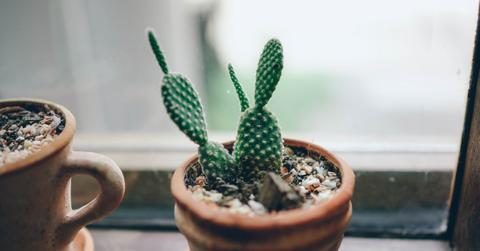Why Scientists Want To Turn Cacti Into Renewable Energy In Mexico
Researchers in Mexico City want to use the traditional prickly pear cactus for more than food, and they've found the perfect niche with a biogas generator built next to a produce marketplace.
Updated May 21 2019, 5:17 p.m. ET
The prickly pear cactus is an extremely popular plant in Mexico. It's grown as food, added to everything from tacos to candies, and it's also used as an ingredient in cosmetics and even medicine. The Nation reports that farming the prickly pear is a tradition for some families that goes back generations, and it's a clear symbol of culture. In fact, a prickly pear is featured on the Mexican flag, holding up a mighty eagle eating a snake. A farmer named Israel Vazquez, who has been working a plot of prickly pears for two decades, told reporters, "Since before the Spanish conquistadors arrived, we have eaten prickly pear cactus. It's our tradition and our culture."
Vazquez is referring to the Aztec story of Huitzilopochtli, who led the Aztecs to the spot where Mexico City now stands to build their capital, Tenochtitlan. Huitzilopochtli told them they'd recognize the spot when they saw an eagle eating a snake on top of a prickly pear cactus. The cactus itself grew from the heart of one of Huitzilopochtli's enemies, after he tore it out and threw it in the lake. The fruit represents that heart, and that's where both the food of the plant (and theoretically its power) comes from.
But the remains of the cactus ends up as waste. Researchers from green energy start up Suema, or Energy and Environmental Sustainability, have been working for years on ways to deal with the by-product of all this celebratory prickly pear consumption. They've developed a biogas generator that can convert the prickly pear leftovers in methane, and set up a prototype on Mexico City's south side.
The pilot project was launched this spring in the Milpa Alta area, which has a cactus market place and 7,000 acres of prickly pear cactus nearby. About 200,000 tons of the plant are produced each year, and researchers estimate 10 tons of that ends up as waste at the marketplace. Suema has the support of the Mexican government, who pledges in 2015 to cut the country's emissions in half by 2050.
At the moment, the generator is not at full power, but they're building towards producing 175 kilowatt hours, or for comparison, enough electricity power 9,600 low-energy light bulbs. By November, the system should be able to process three to five tons of waste a day by mixing the cactus with manure and heating it at 131 degrees Fahrenheit. The biogas is produced and gathered in tanks, and the remains makes about a ton of excellent compost.
If things go well, the Mexico City government's scientific development chief, Bernardino Rosas, is planning to spread the program. The pilot cost $840,000, and biogas only makes up about 0.1 percent of the 15.4 percent of green energy used in the country. But the potential is there. Rosas told AFP that they have a vision of putting in every city with a produce market, 300 in total.
Suema's vision shows how tradition and innovative technologies can find a way to meet and create new ideas for the future.
